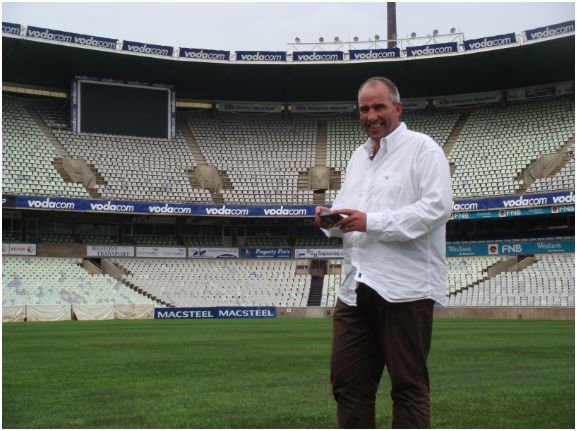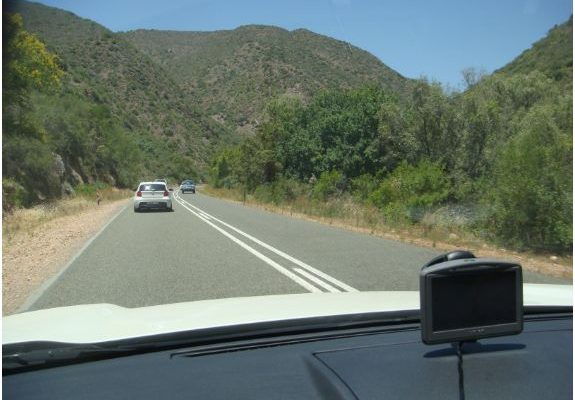
TomTom has combined its sub-Saharan Africa and Benelux operations and hopes to increase local market share to 50% in the next two years.
TomTom regional manager of sub-Saharan Africa Joost Jetten has been named VP of sales for Benelux (Belgium, Netherlands and Luxembourg) and sub-Saharan Africa.
Jetten says the position has been newly created and another country manager for SA will be appointed in the next two months.
He explains that the sub-Saharan Africa and Benelux operations have been combined, because the company did not want to lose the knowledge base that had been created in Africa when he moved to the Benelux region.
“But maybe in one or two years, with the new country manager, the structure will change again.”
Jetten says recent partnerships and innovations have helped TomTom reach an annualised 30% market share for portable navigation devices (PND) in SA, after being in the country for just two years.
The PND producer started off with just 0.8% of the market share two years ago, according to Jetten.
He names the acquisition of Tele Atlas, the partnership with Tracker and TrafficNet and the month-old deal signed with Twitter as contributing factors to the increased market share.
“It’s just us and Garmin. Other navigation companies have come and gone.”
According to Avnic Holdings CEO Richard Fearon – Garmin’s exclusive distributor in SA – Garmin’s market position in the PND in-car device segment for the year ended December 2009 was over 57% (unit volume sales out), and for the first six months of 2010 is much the same.
“Low-cost players have taken share from our major competitors over the last 12 months, whereas Garmin’s share over the period has been trending upwards,” says Fearon. Garmin has a market share in excess of 90% in the outdoor navigation segment, he adds.
Jetten feels it is possible for TomTom to attain a 50% market share in the next two years if all goes according to plan. “First to market is something, but if all goes well it’s possible.”
However, World Wide Worx MD Arthur Goldstuck feels that smartphones with navigation functionality will create revenue challenges for PND producers.
He says handheld navigation systems will soon be a thing of the past. “We will see as many GPS devices in landfills as old phones before long.”
Goldstuck says applications, such as Garmaps for mobile and Google Maps, are making the smartphone a more popular way of navigating. He explains that people would rather purchase one device than two, and this is more cost-effective. “Already, we are faced with a clutter of gadgets and devices.”
TomTom’s achievement of 50% of local market share is possible only in terms of handheld devices, according to Goldstuck, but not in terms of the navigation market on the whole, including smartphones.
“This target suggests that Garmin will have to lose a lot of market share and I don’t think it’s as easy as that.” He adds that the market share of both Garmin and TomTom will drop because of smartphones.
Craig Bowen, marketing manager for marketing services company GfK Retail and Technology, says: “While TomTom has managed to get a foothold and compete in the South African PND market, there is still a huge amount of investment needed to take away the leadership position from Garmin. Garmin is defending well against TomTom and continues to leverage its first mover advantage in the South African PND market.”
Goldstuck also says TomTom would need to drop prices to get the added market share and this would create a challenge for revenue. “They’re going to have a big challenge in terms of revenue and in terms of market forces.”
Bowen adds that during Q1 and Q2 2010, the PND market has grown 30% in units over the same period in 2009 and only 6% in revenue. “In the last year (rolling 12-month period), the average price for a PND device has dropped by R600.”
Enabling interactivity
Two elements were specifically responsible for the quick success of TomTom in SA, according to Jetten. “The local organisation is the first element. You can always talk about your brand better than anyone else.”
The second element that allowed TomTom’s success was that it came into a market that was dominated by one company. Jetten explains that by coming in as competition in a monopoly, it offers locals a choice in the PND market.
He also says TomTom SA had to play catch up with the European organisation for a while. Releases here were always a while after new releases overseas, but now the release dates for SA are the same.
PNDs now have to place their focus on interactivity, he notes. “Community is driving market direction now. People ask others first when buying a product and do some of their own research via social media, so when they walk into a store they already know what they want. That’s why enabling interactivity is important.”
[Story by Farzana Rasool, ITWeb journalist appeared on ITWeb.co.za]

